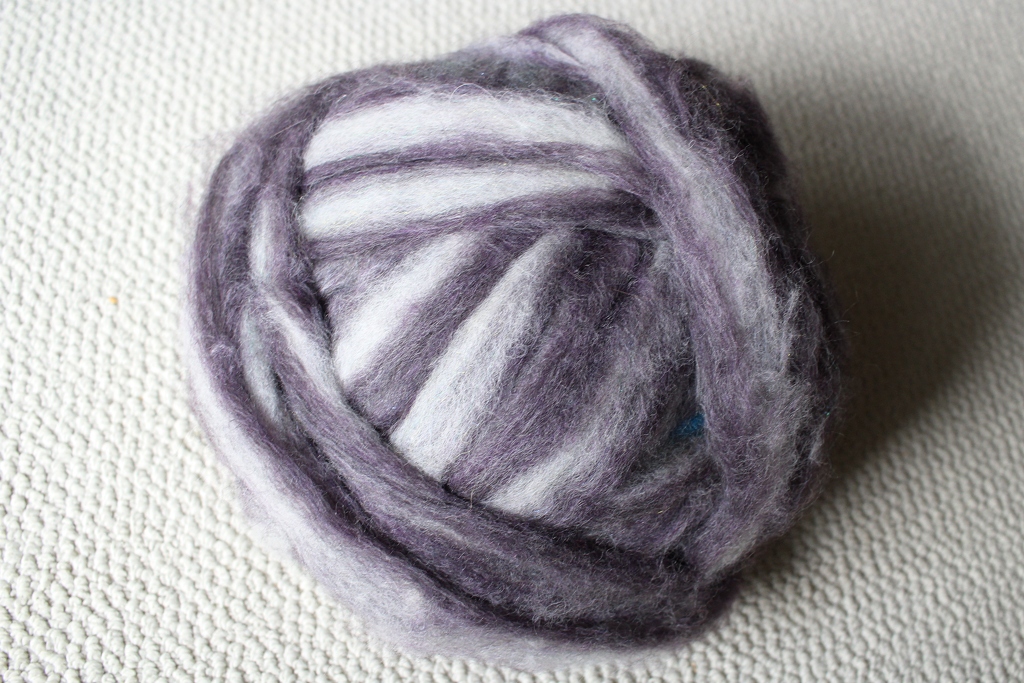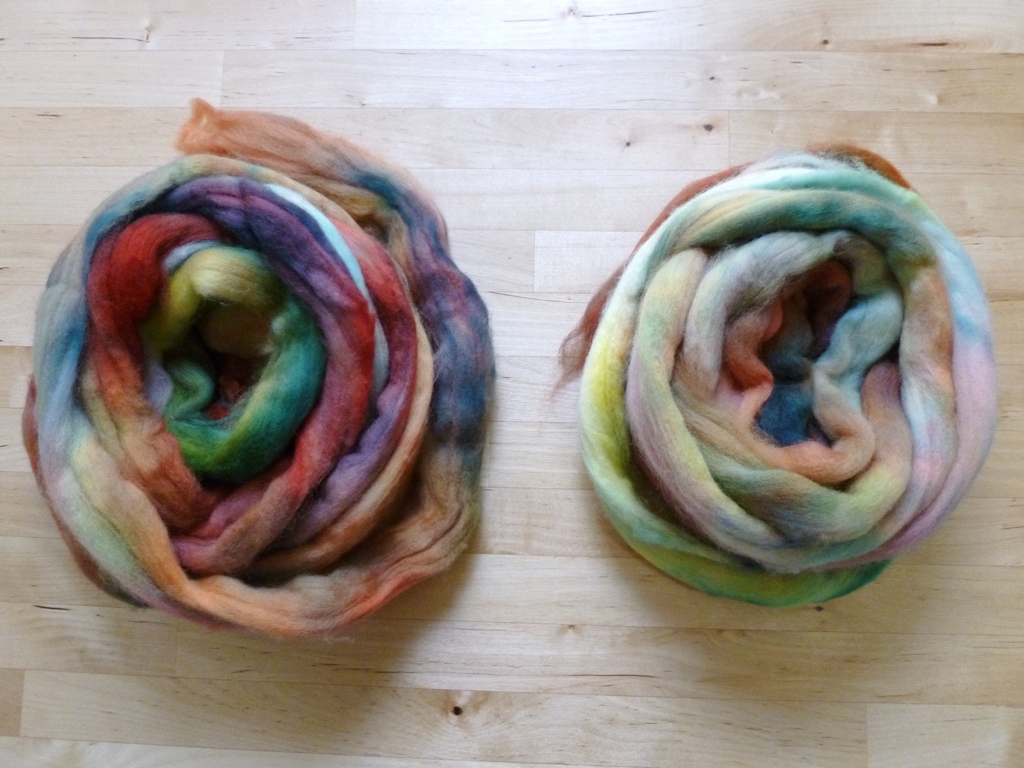Interweave Yarn Fest 2017 Haul
/I made it 72 days without buying yarn or fiber for myself before breaking my Cold Sheep streak at Interweave Yarn Fest. Besides from 2 skeins I bought to knit a baby gift, all of my knitting and spinning has come from the great stash repository that is Yarn Fort.
So what did I get at Yarn Fest? Just the stuff that absolutely called out to me and that I had a plan for. I’m always enthralled by the colors in the Western Sky Knits booth and couldn’t walk away without at least one skein. Her grays are incredible, and how could I turn down lustrous green on a BFL/silk blend. They’re destined to be shawls or cowls. The skein on the right is Brown Sheep Lana Worsted and I couldn’t resist the colors. My first idea was that it would become a hat or mitts, but now I’m thinking about slippers. Either way, that yarn will turn into something cosy. The mini-skein kit I bought as a gift only now I want to keep it for myself. I’m still waffling about what to do about it. Knitting it up and giving that away counts too, right?
One of my main fiber buying goals was to find fiber to spin for a friend of mine. I couldn’t find the right colors though. Still found stuff for myself though, so I didn’t go home empty handed. In a big departure from my usual color picks, I bought a lot of black mixed up with bright colors. 8 oz is a Rambouillet/Columbia cross from Brown Sheep. 4 oz is a beautiful carded prep of Shetland, Alpaca, and silk noil, perfectly named Stained Glass, by The Natural Twist. My last pick is 8 oz of BFL and Tussah Silk. It was the first roving that caught my eye when I wandered the booths and I kept coming back to it. I had no plan for it, still don’t, but I’m not going to let it languish.
I got some not yarn too: two beautiful project bags from Sincere Sheep, a yew wood shawl pin, and buffalo/merino socks.
All in all, I’m thrilled with what I got. And as someone doing the Cold Sheep thing, I regret nothing about my purchases. Going to Yarn Fest and other local fiber festivals has been part of my Cold Sheep plan from the beginning. I went knowing what I already had and what I wanted which really curbed the urge to buy all the things. Telling myself I didn’t have to spend every cent I brought helped too. The stash got some fresh new additions that I’m excited about and don’t feel overwhelmed by. That’s a win and the ultimate end goal of Cold Sheep for me.
















































